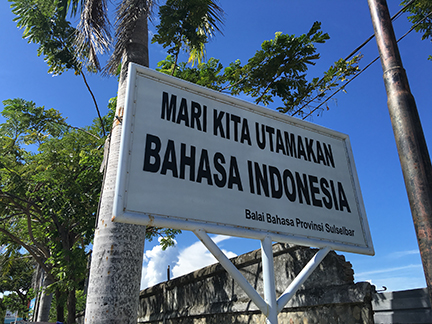In the 2008 edition of the Lonely Planet guidebook, the village of Majene falls near the fold of the map, but is not mentioned anywhere else in that edition. I made this observation in July of that same year, having just learned I would be spending my next nine months there. As I didn’t speak any Indonesian, I took solace in this tiny dot in a tourist tome. Surely some modern conveniences and English speakers would present themselves to me if Majene had garnered ink at the 1in:400mi scale.
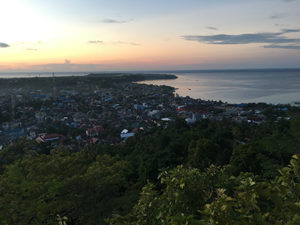
I came out of many misconceptions in this rural Muslim community. First of all, I shed my false hopes about that dot. Not long after arriving, I concluded that it had been included as a gesture of kindness to the mapspace of West Sulawesi, which was otherwise devoid of text. (I later learned the dot was a vestige of the 2003 edition, which spared two column inches to inform travelers they could lodge with the local doctor if they found themselves this far away from other entries.) To me, Majene seemed far away from everything. Even the internet was eight hours away.
They say distance makes the heart grow fonder, but being so distant from all I knew made even my self seem strange. At twenty five, I was discovering that much of what I knew as “me” was a shared text written by my schools and society. I should have realized this sooner, especially given that for the two years prior I had been teaching a self versus society arc to “disadvantaged[1]” students in the South Bronx. I made it to the other side of the world telling that story. I had been so set on selling the story that I hadn’t publicly unpacked any of the unstated assumptions it built upon, such as what “urban” entails, what the Bronx is like, what people who “serve their country” there actually do, or what high test scores said about me.
I now found myself in a foreign land, speaking a language that registered as foreign here. Why had a monoglot been selected to teach English Language Learners, in the Bronx or abroad? How much more effective might a bilingual teacher be in this context? If teaching underserved1 students is of paramount importance to our nation, why wasn’t teacher education or prior classroom experience a prerequisite of either of the programs that selected me? Had I been helping myself more than anyone else? As I prepared to teach students with whom I could not speak, I was perturbed by the possibility I might be doing more harm than good. In Majene, my story finally caught up with me. Being this lost, I was finally freed from a second misconception: that education can solve all social problems.
In ten years of teaching, I have learned that education also creates and perpetuates social ills. As my own life story has at times included economic hardship, I am concerned that narratives of poverty and modernity are being employed to justify the restructuring of schools and curricula, and that this is increasingly occurring all around the world. In an era of globalization** and standardization, our increasingly common sense of education’s possibilities may actually be rendering schools less culturally responsive, and less democratic. By questioning some of our collective assumptions about education, I intend to explore the way we value, respect, and effect the education of other people’s children.
In this and subsequent newsletters, I will be investigating these themes as I explore Indonesia — a secular democracy that is home to the world’s largest population of Muslims, a people who regularly report themselves to be the happiest people on the planet even though 120 million of them live on under $2 a day[2], a collective of hundreds of cultures and languages that may be lost to us all in mere decades. I intend to elucidate the importance of Indonesia as a part of our collective future by exploring the ways we learn about ourselves as citizens and spiritual beings, as emotional and rational entities, and as actors, economic or otherwise. Clearly, this is no small task. I am forever indebted to the Institute of Current World Affairs for offering me the opportunity to struggle with it, and to share what I learn.
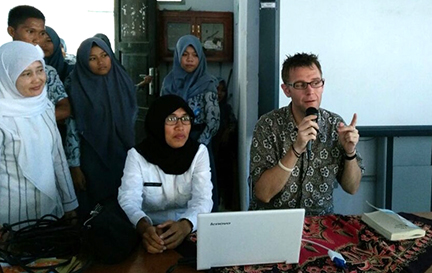
Moving into Modernity
I am launching my ICWA fellowship from the village where I (and this letter) began: a small fishing village on the west coast of the island of Sulawesi. (For those looking for it on their map, find the island that resembles what the offspring of the letters “h” and “f” might look like. Majene is out on the west hook of that.) Since 2008, both Majene and I* have changed considerably, which was to be expected — after all, the only permanence in life is change. With that said, the pace of change this village has undergone says much about the rate of development in Indonesia as a whole.
For the sake of clarity, I will focus on three separate but somewhat inter-related developments. First, the internet has arrived. Leapfrogging into constant connectivity, many in Majene now have a smartphone and use Facebook. The reach of the internet into rural areas explains why Indonesia has risen to the fourth-largest community of Facebook users in the world, with over 77 million active users. This shift toward the presentation of oneself as an individual may be of a more paradigmatic nature than some of my readers might initially perceive: whereas Americans are the most individualistic people on the planet, Indonesian cultures are among the most collective and family-oriented[3]. The significance of social media penetration nearly resulted in battle lines being drawn: in 2009, Majelis Ulama Indonesia, the fatwa-issuing body of the country, considered declaring Facebook haram, but opted instead to issue a fatwa against women and children smoking cigarettes. This choice saved lives and, likely, MUI’s legitimacy, but it is also a case in point: for better or worse, modern technologies are challenging ways of knowing and being in distant spaces, and standardizing patterns of interaction worldwide.
Curiously enough, during the week I was in Majene, the mesjids[4] were packed with Pokemon Go players, as places of prayer throughout the world have (somewhat ironically) been designated as battle gyms. I heard some grumbling about this from older friends, who worry that young people are spending too much time on their phones and too little time in communion with God. But this is the new reality, whether they like it or not. As Lupe Fiasco once rhymed, “it doesn’t really matter if they have parental clearance — they understand the internet better than their parents.” The reality of Majene is being augmented in many ways at once.
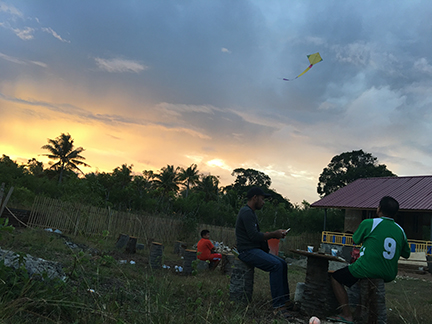
A second development that warrants consideration is the completion of construction on the road that connects Majene to Makassar, where I went to use the internet back in 2008. Many more Majene residents can brag that they have made the pilgrimage to a mall in the “big city” to see a Hollywood movie now that the road has been widened and paved. This road construction also made possible the construction of four convenience stores. Plans to build a fifth store were stymied by protests from traders from the traditional market. Whereas MUI balked at the advance of modern technology, the Indonesian government and the local people seem ready to battle for control of commerce.
In 2014, while campaigning for president, Joko Widodo (“Jokowi”) responded to this call to arms. Making several of his famous “blusukan[5]” to traditional markets, he promised to provide funding to revitalize traditional markets so that they could compete with retail outlets[6]. As recently as April of this year, he promised to create 5,000 new traditional markets throughout the country to ensure that rural traders can stand their ground against supermarkets and malls. But the battle lines are poorly drawn: though several friends claimed they only go to convenience stores when they must, I noticed many of them frequenting an Indomaret on a daily basis.
If nothing else, this internal conflict between culture, convenience, and consumerism makes great fodder for jokes. Speaking at a gathering during Eid, Ustad Abdul Rahman Hasan playfully mocked the stores for giving out small pieces of candy when they do not have enough small change to complete transactions. Hasan joked that he was saving the candy until he had enough to buy something with them, as it is apparently now legal tender[7]. The quip got snickers, but the increasing dominance of retail stores over traditional markets may prove no laughing matter.
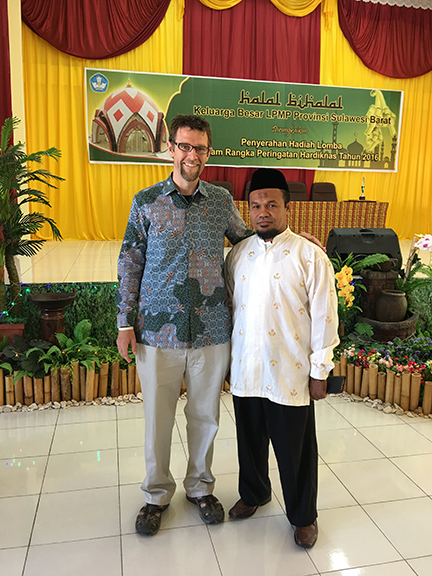
Propaganda and Pedagogy
The sorts of shifts detailed above were set in motion when Indonesia began to decentralize political and economic power to local regions in the aftermath of President Soeharto’s resignation in 1999. In terms of economic development and democratization, most would qualify Indonesia’s decentralization process a rapid and radical success. However, the failed fatwas and successful blusukan of Jakarta-based actors may not be the most reliable signposts to Indonesia’s future.
Because Jakarta has served as the seat of power for three times as long as the country has existed, rising to power in Indonesia has typically required support from Jakarta-based groups that have traditionally benefitted from centralized governance. The devolution of power from Jakarta to the rest of Indonesia has been complicated by the fact that the megalopolis serves as both the economic and political capital of the country. In the face of decentralization schemes, Jakarta has grown at a rate of 3.6 percent per year (compared to a nationwide 1.3 percent), overtaking Shanghai and New York City as the second-most populous area in the world. Over 30 million people now call “Jabotadek” home[8]. Over the course of seventeen years and five presidents, decentralization has coincided with a move to the center.
Central to Indonesia’s agenda is educational development, as is evidenced by the fact that the country is constitutionally required to allocate 20 percent of expenditures to education[9]. The World Bank believes increasing educational access and quality is key to the nation’s rise to international prominence. But what assumptions are implicit to this development agenda? What quality of education do government officials and Muslim mufti envision for Indonesia’s children? And how has the process of political and economic decentralization structured Indonesia’s schools?
Education in the archipelago is probably best considered to be undergoing a process of “centralized decentralization.” Indonesia has had a national curriculum since it became a nation, but as a result of a confusing, half-hearted cancellation of the national curriculum in 2014[10], Indonesia currently has two national curricula. The proclivity among policymakers to exercise control is evidenced by the fact that in seventy years of independence, the national curriculum has been revised ten times. The national examination now has to be delivered to schools throughout the country by police officers, which offers some insight into who was cheating. Taken together, these details demonstrate how Indonesia solves its educational problems.
The problem with centralized education in a country of 240 million people is that it is possible for culturally dominant groups to use the democratic national apparatus not just for education, but for ideological indoctrination — hegemonization — of the ways that minority groups know about themselves, their country, their world, and their gods. Such uses of education are fundamentally anti-democratic.
Which brings me to the third and final shift I noticed in Majene: a national propaganda campaign to encourage the use of the national language of Indonesia.
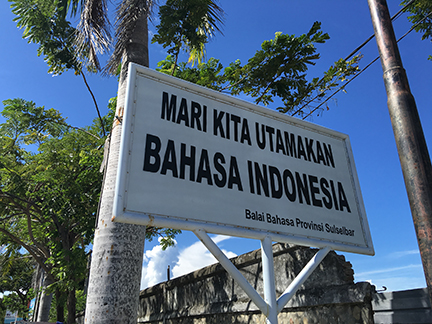
The sign featured in this picture is one of many that have been erected throughout Majene, including right in front of the local educational office. The signs, which have been installed on several islands[11] by divisions of the Agency for the Development and Expansion of Language, represent a form of public pedagogy. Schools are not the only spaces in which we learn — like posters on classroom walls, street signs can teach us, and we can learn from them. Given that most of the people who see these signs already speak Indonesian, the lesson they learn is that people should prioritize the nation’s language even over that of their grandparents. Insomuch as this is true, these signs, which were instated by the Indonesian government, present a threat to endangered languages and subaltern cultures.
“Mandar[12] culture will cease to exist in two decades.” Mr. Sinar Alam didn’t seem particular happy about this, but he didn’t seem broken up about it either. Perhaps this is because he himself is not Mandar. He moved up from Makassar — the town where the signs were produced — in 1995, when Majene was “nothing but a cross-street.” As the section chief of information and mapping systems of the Education Quality Assurance Agency, Alam is a policy person — a numbers knower. He can tell you how many high school principals there are in all of Majene regency, and he told me that just the week before, he had asked all 21 of them what could be done to save Mandar culture. The principals responded in silence.
Unlike Alam, Mr. Rusbi Hamid was born and raised in Majene, and has lived outside of his native land only while he attending college in Makassar. When asked about the signs, he indicated that no local authority had anything to do with them. I asked whether it might be worth “fixing” them by replacing the word “Indonesia” with “Mandar,” to which he flatly replied that the police would likely deem this provocative — perhaps even an arrestable offense. When I suggested that I felt the sign could be read as a threat to the local language, Bahasa Mandar, he assented, adding that this was just another unavoidable reality of globalization.** Hamid made the loss of his own native language seem inevitable, and did so in stark terms at that.
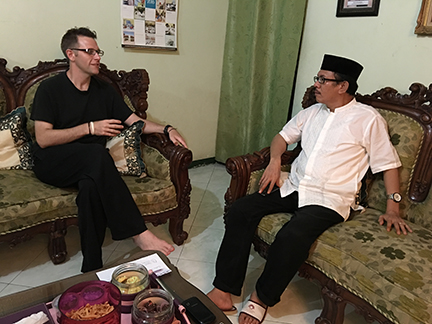
I decided to speak with a Majene principal directly. Mr. Haswin Tambaru was born in Pamboang, a smaller village just down the coast that is part of the same culture. Tambaru now lives in Majene proper. He uses Indonesian as a second language, almost exclusively with city kids like me. His five children speak Mandar on a sliding scale — the younger they are, the less they can produce. I asked whether he thought that Bahasa Mandar was indeed in danger.
“The kids in the city already only speak Bahasa Indonesia…but the kids in the hills will speak the native language of this land for many more generations.”
As this was the most hopeful response I had received, I dug deeper, inquiring as to what role schools might play in maintaining the use of local languages. Here, Tambaru’s tone dropped drastically: “Schools today prepare children for work.”
Approaching Anagnorisis
I can’t connect all the dots after only a month in country, but thus far my exploration suggests that Indonesia’s process of decentralization has been less the rapid and radical success it is sometimes heralded as, and more a tug of war between distant spaces and the center. Traditional and retail markets compete for control of commerce, but even anti-consumerists such as myself occasionally give in to guilty pleasure and buy ice cream at Indomaret. And while places like Majene have been augmented by the internet, so too has the state’s ability to censor[13].
As I explore educational spaces throughout Indonesia over the next two years, I hope to come out of more of my misconceptions, and become more fully cognizant of the problems and possibilities that exist for a nation and a people on the cusp of becoming. It could be that the signs were a well-intended attempt to develop a shared national identity, but they nonetheless registered to Majene residents as tone-deaf and culturally insensitive. It is also possible that the signs signify an attempt on the part of Jakartans to maintain or regain control. What I know is that no governmental program currently seeks to develop and extend any of Indonesia’s endangered languages or for any of the cultures to which these languages are key. Insomuch as this is true, empowered1 people from all across the political spectrum would be wise to keep in mind that learning is a two-way street. We have as much to gain as to give from our cross-cultural interactions.
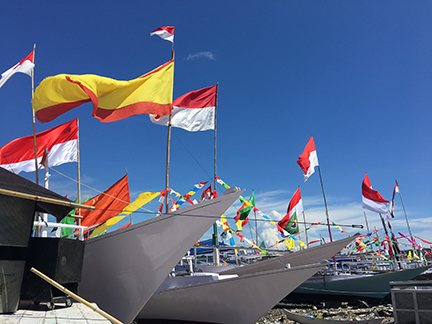
*In the eight years since I first arrived in Majene, my Indonesian language skills have transcended superior, my cultural contexts are more numerous and nuanced, and my networks are more extensive and excentric. Still, I feel it important to disclose, as immediately as possible, that I am writing across divides of culture, language, religion, gender, class, race and ethnicity, ability, pedagogy/discipline, and others, some unknown to me. Where I sense fractures and disjointedness, I’ll dig diligently and write honestly. Nonetheless, I will surely fall flat or off-course at times. As such, I invite critiques and questions – this is how I know and grow. I’m still learning, forever will be.
**All translations are my own, and are as true to the speakers’ intentions as the languages allow.
[1] Only years later would I consciously reflect on the way we commonly use the passive voice to ring poverty bells without sounding accusatory…
[2] http://www.aljazeera.com/indepth/opinion/2014/07/indonesia-jarring-wealth-gap-2014728101920261316.html
[3] http://www.clearlycultural.com/geert-hofstede-cultural-dimensions/individualism/
[4] Commonly referred to in English as a mosque. I feel it inappropriate to Anglicize other’s cultures.
[5] These “impromptu visits” are a trademark of Jokowi’s diplomatic style. He claims they have helped him solve most of his major challenges as a government official.
[6] http://www.antaranews.com/berita/441647/jokowi-janji-revitalisasi-pasar-tradisional
[7] I’m reminded of a joke by one of my favorite comedians, Steven Wright: “Everybody wants to give their 2¢, but it’s only a penny for your thoughts…somewhere, somebody’s making a penny.”
[8] http://finance.detik.com/read/2014/02/19/123111/2501962/1016/jabodetabek-calon-megapolitan-terbesar-ke-2-di-dunia
[9] http://www.worldbank.org/en/country/indonesia/brief/world-bank-and-education-in-indonesia
[10] https://m.tempo.co/read/news/2014/12/05/079626635/kurikulum-2013-dibatalkan-balik-ke-kurikulum-2006
[11] https://lomardasika.wordpress.com/category/kalimantan-tengah/
[12] Mandar is the name of the tribal group that predominates in West Sulawesi. The people of Majene are “the Mandar.” It is completely unrelated to Mandarin, though even Indonesians confuse the two.
[13] An overview of some of the most egregious abuses of the ITE law can be reviewed at http://jakarta.coconuts.co/2016/08/26/silencing-critics-5-most-outrageous-and-ridiculous-cases-uu-ite-violations

